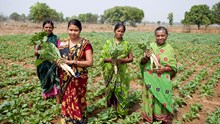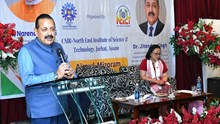
In the world of Indian fish farming, Catla holds a place of pride. It is one of the three major Indian carps, along with Rohu and Mrigal. Catla is well-known for its fast growth, large size, and preference for feeding near the surface of the water. Because of this feeding behavior, it fits perfectly in composite fish culture systems where multiple species grow together without competing for food.
Catla is native to the rivers of the Indo-Gangetic plains but is now farmed in ponds and reservoirs across India, from Assam and Bihar to Tamil Nadu and Maharashtra. It is easily recognizable due to its broad head, silvery body, and large size.
Natural Habitat and Behavior
Catla prefers freshwater environments such as rivers, ponds, and tanks with clean, warm water. It grows best in water temperatures ranging from 25 to 32 degrees Celsius. The ideal water pH should be around 7 to 8.5. Catla likes large water bodies with slow or no flow, and a soft, muddy bottom. Being a surface feeder, it mainly eats zooplankton and small aquatic organisms found in the upper layers of water.
Seed Availability and Breeding
Catla does not breed naturally in closed ponds, so hatchery-based breeding is required. Induced breeding using hormonal injections is practiced in hatcheries, where mature male and female brood fish are selected carefully. After spawning, fertilized eggs are collected and hatched in tanks or hapas. Once the fry grow to a certain size, they are moved to nursery ponds for further rearing.
Farmers can purchase Catla fry or fingerlings from certified hatcheries. It is recommended to stock fingerlings of 100 to 150 millimeters in size for better survival and growth.
Pond Preparation and Stocking Practices
Before stocking Catla fingerlings, the pond must be properly prepared. This includes drying the pond bottom, applying lime to adjust soil pH, removing aquatic weeds, and eradicating harmful predatory fish. Manure and fertilizers are added to promote plankton growth, which serves as natural food for Catla.
In composite culture, Catla should be stocked along with Rohu and Mrigal. Since Catla feeds at the surface, Rohu in the middle layer, and Mrigal at the bottom, this system ensures balanced use of pond resources. Depending on the pond size and fertility, stocking densities vary, but a general recommendation is to maintain a higher percentage of Catla in the surface feeding zone to maximize output.
Feeding and Daily Management
Though Catla thrives on natural plankton, farmers are advised to provide supplementary feed to enhance growth and reduce the culture period. A simple homemade feed mixture made of rice bran and oilcake (mustard, cottonseed, or groundnut) in equal proportion can be used. The feed should be offered twice daily at 3 to 5 percent of the total body weight of fish.
It is important to monitor water quality regularly, especially the oxygen level. Sudden changes in temperature, overfeeding, or accumulation of organic waste can lead to stress or mortality. Cleaning unused feed and debris from feeding areas helps maintain good pond hygiene.
Growth, Harvesting, and Marketing
Catla grows very fast under good conditions. In about 10 to 12 months, it can reach a weight of 1.5 to 2.5 kilograms or more. Farmers may go for partial or complete harvesting depending on market demand. Harvesting is done using drag nets or seine nets, preferably early in the morning or late evening to reduce fish stress.
Catla fetches a good price in the local market, often between Rs. 120 to Rs. 200 per kilogram, depending on the size and region. Because of its soft flesh and large size, it is highly preferred by consumers, making it a profitable species for farmers.
Support and Training for Farmers
Many government agencies such as ICAR-CIFA, NFDB, state fisheries departments, and Krishi Vigyan Kendras offer training programs on fish farming, especially composite fish culture involving Catla. Farmers can also benefit from subsidies under schemes like the Blue Revolution and PM Matsya Sampada Yojana for pond construction, hatchery development, and feed support.
Catla farming is not just about growing fish; it is about growing income, food security, and opportunity for rural communities. With proper pond management, timely feeding, and support from fisheries experts, farmers can turn their water resources into valuable assets. Catla, with its fast growth and high demand, truly lives up to its reputation as the "gentle giant" of Indian aquaculture.
















